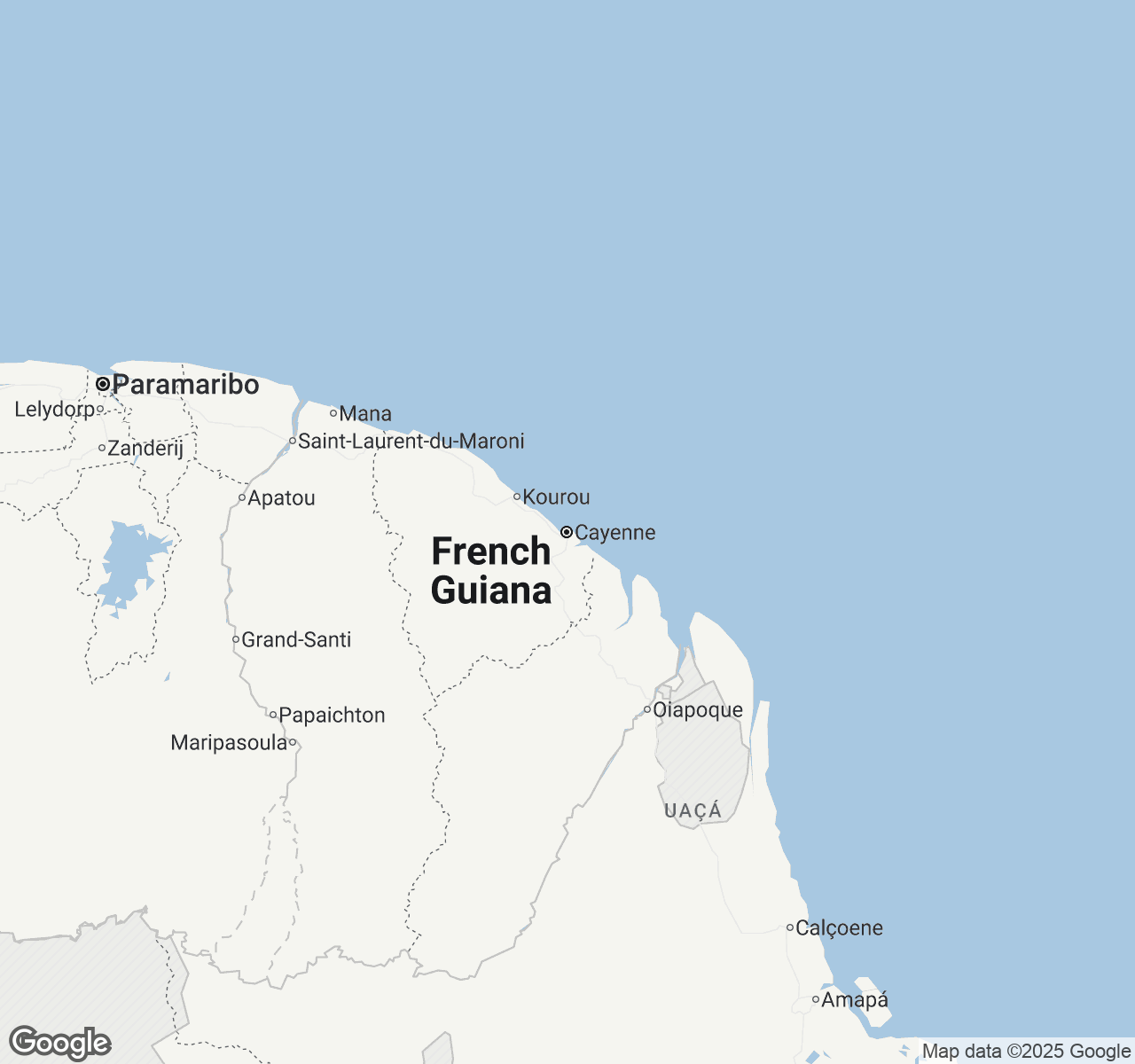
Things to Do in Cayenne
Discover the best of Cayenne
Plan Your Trip
Essential guides for timing and budgeting
Top Things to Do in Cayenne
Discover the best activities and experiences. Book now with our trusted partners and enjoy hassle-free adventures.
Your Guide to Cayenne
About Cayenne
Where the Amazon rainforest meets the Atlantic Ocean, Cayenne pulses with a unique Creole rhythm that echoes through its colorful colonial streets and bustling markets. This captivating capital of French Guiana weaves together indigenous Amerindian heritage, African traditions, and French sophistication into a tapestry unlike anywhere else in South America. The air carries the intoxicating blend of exotic spices from the central market, while weathered wooden houses painted in brilliant yellows, blues, and greens stand as testament to centuries of cultural fusion. Here, jaguars and sloths roam just beyond the city limits, space rockets launch from nearby Kourou, and locals gather in evening squares where the melodic patois of Creole mingles with French conversation. Cayenne invites you to slow down and savor its unhurried pace—whether you're watching fishermen return with their daily catch at dawn, exploring the maze-like Marché de Cayenne, or simply letting the tropical warmth wash over you as palm fronds sway in the trade winds.
Travel Tips
Transportation: Rent a 4WD vehicle for exploring beyond Cayenne, as many jungle roads are unpaved. Within the city, use local 'taxi-bus' collective transport or walk—most attractions are concentrated in the historic center. Book domestic flights to interior towns well in advance.
Money: Euro is the official currency. Credit cards are widely accepted in Cayenne, but carry cash for markets and small vendors. ATMs are reliable in the city center. Tipping 10% at restaurants is customary but not mandatory.
Cultural Respect: Learn basic French phrases as English isn't widely spoken. Dress modestly when visiting religious sites. Ask permission before photographing locals, especially in indigenous communities. Sunday is family time—many businesses close and streets become quieter.
Food Safety: Stick to bottled water outside the city. Try local specialties like bouillon d'awara and cassava bread at established restaurants. Street food from busy stalls is generally safe. Avoid raw fish dishes during the rainy season months.
When to Visit
Cayenne enjoys a tropical climate with two distinct seasons. The dry season (July-November) offers the most comfortable conditions with temperatures ranging 24-32°C (75-90°F) and minimal rainfall (50-100mm monthly). This is peak season when prices rise 25-40% and accommodations fill quickly—book well in advance. The wet season (December-June) brings heavy afternoon showers and higher humidity, with temperatures staying consistent at 25-33°C (77-91°F) but rainfall reaching 300-400mm monthly. However, this off-peak period offers 20-30% savings on hotels and fewer crowds. The 'short dry season' in March provides a sweet spot with moderate rainfall and lower prices. Key festivals include Carnaval de Guyane (February-March), featuring busy parades and traditional music, and the Fête de la Musique (June 21st) celebrating local and international artists. Space enthusiasts should time visits with Ariane rocket launches from nearby Kourou (typically 4-8 annually, check CNES schedule). Nature lovers prefer the dry season for jungle excursions and turtle watching, while budget travelers find excellent value during the shoulder months of June and December when rains are lighter but prices remain low.

Cayenne location map